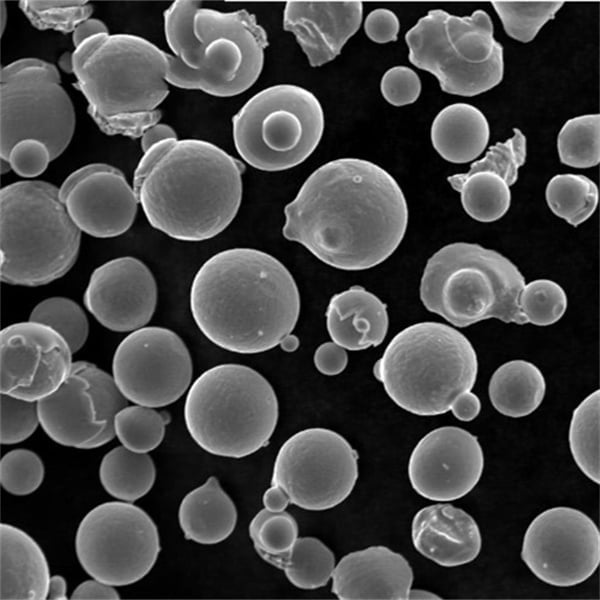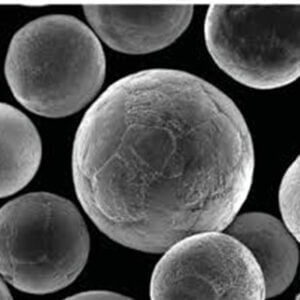Legeren in situ: Een revolutie in de materiaalwetenschap
Inhoudsopgave
Welkom in de fascinerende wereld van in-situ legeren! Als je je afvraagt wat in-situ legeren is, maak je dan geen zorgen - ik heb het voor je geregeld. In deze uitgebreide gids duiken we diep in alles wat je moet weten over dit baanbrekende proces. Aan het einde van de rit ben je een liefhebber van in-situ legeren!
Overzicht van In-situ legeren
In-situ legeren is een geavanceerd fabricageproces waarbij twee of meer verschillende metaalpoeders worden gemengd en gelegeerd tijdens het fabricageproces zelf, in plaats van het combineren van vooraf gelegeerde poeders. Deze methode maakt het mogelijk om legeringen op maat te maken met unieke eigenschappen voor specifieke toepassingen. Zie het als het bakken van een cake vanuit het niets in plaats van een kant-en-klare mix-je hebt controle over elk ingrediënt en kunt het recept perfect aanpassen.
Waarom in-situ legeren?
Waarom heeft in-situ legeren de laatste jaren zoveel aandacht gekregen? Het antwoord ligt in de vele voordelen, waaronder de mogelijkheid om zeer aangepaste materialen met superieure eigenschappen te produceren. Of het nu gaat om het maken van lichte maar sterke componenten voor de lucht- en ruimtevaart of de productie van corrosiebestendige onderdelen voor scheepvaarttoepassingen, in-situ legeren biedt ongeëvenaarde flexibiliteit en precisie.
Belangrijkste voordelen van in-situ legeren
- Maatwerk: Pas de samenstelling aan om aan specifieke behoeften te voldoen.
- Efficiëntie: Combineer meerdere stappen in één gestroomlijnd proces.
- Kwaliteit: Superieure materiaaleigenschappen bereiken in vergelijking met traditionele methoden.

Specifieke metaalpoeder-modellen in In-situ legeren
Laten we nu eens de details bekijken van metaalpoeders die worden gebruikt bij in-situ-legeringen. Hier volgt een overzicht van enkele specifieke metaalpoedermodellen en hun unieke eigenschappen.
1. Aluminium (Al) poeder
- Beschrijving: Licht, corrosiebestendig en zeer geleidend.
- Toepassingen: Ruimtevaart, auto-industrie en elektronica.
- Eigenschappen: Hoge sterkte-gewichtsverhouding, uitstekende thermische en elektrische geleidbaarheid.
2. Titanium (Ti) poeder
- Beschrijving: Bekend om zijn sterkte, lichtgewicht en biocompatibiliteit.
- Toepassingen: Medische implantaten, onderdelen voor de ruimtevaart.
- Eigenschappen: Hoge treksterkte, corrosiebestendigheid, biocompatibiliteit.
3. Nikkel (Ni) poeder
- Beschrijving: Uitstekende weerstand tegen corrosie en hoge temperaturen.
- Toepassingen: Turbinebladen, kernreactoren.
- Eigenschappen: Hoog smeltpunt, corrosiebestendigheid, goede mechanische eigenschappen.
4. Koper (Cu) poeder
- Beschrijving: Zeer geleidend en kneedbaar.
- Toepassingen: Elektrische onderdelen, warmtewisselaars.
- Eigenschappen: Hoge elektrische en thermische geleidbaarheid, goede vervormbaarheid.
5. Poeder van ijzer (Fe)
- Beschrijving: Veelzijdig en veel gebruikt in diverse industrieën.
- Toepassingen: Auto's, bouw, machines.
- Eigenschappen: Goede magnetische eigenschappen, sterkte en vervormbaarheid.
6. Roestvrij staal (SS) poeder
- Beschrijving: Corrosiebestendig en sterk.
- Toepassingen: Medische apparaten, voedselverwerkingsapparatuur.
- Eigenschappen: Hoge corrosiebestendigheid, goede sterkte en duurzaamheid.
7. Kobalt (Co) poeder
- Beschrijving: Uitstekende slijtvastheid en stabiliteit bij hoge temperaturen.
- Toepassingen: Snijgereedschappen, lucht- en ruimtevaartmotoren.
- Eigenschappen: Hoge hardheid, slijtvastheid, thermische stabiliteit.
8. Magnesium (Mg) poeder
- Beschrijving: Extreem licht en sterk.
- Toepassingen: Auto's, luchtvaart, elektronica.
- Eigenschappen: Hoge sterkte-gewichtsverhouding, goed bewerkbaar.
9. Wolfraam (W) poeder
- Beschrijving: Extreem dicht en hittebestendig.
- Toepassingen: Stralingsafscherming, elektrische contacten.
- Eigenschappen: Hoge dichtheid, hoog smeltpunt, goede thermische geleidbaarheid.
10. Molybdeen (Mo) poeder
- Beschrijving: Uitstekende sterkte en stabiliteit bij hoge temperaturen.
- Toepassingen: Ovenonderdelen, ruimtevaartonderdelen.
- Eigenschappen: Hoog smeltpunt, goede thermische en elektrische geleidbaarheid.
De wetenschap achter In-situ legeren
Om de wetenschap achter in-situ alloying te begrijpen, moet je je een beetje verdiepen in materiaalkunde en -techniek. Wanneer verschillende metaalpoeders worden gecombineerd en worden blootgesteld aan hoge temperaturen en druk, vormen ze een vaste oplossing of een nieuwe fase met verschillende eigenschappen. Dit proces kan worden verfijnd om de gewenste microstructuur en eigenschappen van de uiteindelijke legering te bereiken.
Eigenschappen en kenmerken van in-situ legeringen
De eigenschappen van in-situ legeringen zijn afhankelijk van de specifieke metaalpoeders die worden gebruikt en de verwerkingsomstandigheden. Hier is een handige tabel met een samenvatting van de eigenschappen van enkele veelvoorkomende in-situ legeringen:
| Metaalpoeder | Samenstelling | Eigenschappen | Kenmerken |
|---|---|---|---|
| Aluminium (Al) | Zuiver Al of Al-legeringen | Hoge sterkte-gewichtsverhouding, geleidbaarheid | Lichtgewicht, corrosiebestendig |
| Titaan (Ti) | Zuiver Ti of Ti legeringen | Hoge treksterkte, biocompatibiliteit | Sterk, lichtgewicht, corrosiebestendig |
| Nikkel (Ni) | Zuiver nikkel of nikkellegeringen | Hoog smeltpunt, corrosieweerstand | Duurzaam, hoge temperatuurstabiliteit |
| Koper (Cu) | Zuiver Cu of Cu-legeringen | Hoge elektrische en thermische geleidbaarheid | Buigzaam, geleidend |
| Ijzer (Fe) | Zuiver Fe of Fe-legeringen | Goede magnetische eigenschappen, sterkte | Veelzijdig, sterk |
| Roestvrij staal (SS) | Verschillende SS-klassen | Corrosiebestendigheid, duurzaamheid | Sterk, corrosiebestendig |
| Kobalt (Co) | Zuivere Co of Co-legeringen | Hoge hardheid, thermische stabiliteit | Slijtvast, hittebestendig |
| Magnesium (Mg) | Zuiver Mg of Mg-legeringen | Hoge sterkte-gewichtsverhouding, bewerkbaarheid | Lichtgewicht, sterk |
| Wolfraam (W) | Zuiver W of W-legeringen | Hoge dichtheid, thermische geleidbaarheid | Dicht, hittebestendig |
| Molybdeen (Mo) | Zuiver Mo of Mo-legeringen | Hoog smeltpunt, geleidbaarheid | Hittebestendig, geleidend |
Toepassingen van in-situ-legering
In-situ alloying wordt gebruikt in verschillende industrieën, van lucht- en ruimtevaart tot medische apparaten. Hier zijn enkele van de belangrijkste toepassingen:
| Sollicitatie | Beschrijving | Voorbeelden |
|---|---|---|
| Lucht- en ruimtevaart | Lichtgewicht, sterke componenten | Turbinebladen, structurele onderdelen |
| Automobiel | Hoogwaardige, lichtgewicht materialen | Motoronderdelen, chassiscomponenten |
| Medische apparaten | Biocompatibele, corrosiebestendige materialen | Implantaten, chirurgisch gereedschap |
| Elektronica | Geleidende, hittebestendige materialen | Printplaten, connectoren |
| Bouw | Duurzame, sterke materialen | Structurele componenten, gereedschappen |
| Energie | Hittebestendige, geleidende materialen | Turbinecomponenten, reactoren |
| Gereedschap | Harde, slijtvaste materialen | Snijgereedschappen, mallen |
| Marien | Corrosiebestendige, duurzame materialen | Scheepscomponenten, offshore constructies |
Specificaties, Maten, Rangen, Normen
Als het aankomt op specificaties, maten, kwaliteiten en normen, zijn in-situ legeringsmaterialen zeer gevarieerd. Hier is een tabel met een aantal van deze aspecten voor een paar veelvoorkomende legeringen:
| Metaalpoeder | Specificaties | Maten | Cijfers | Normen |
|---|---|---|---|---|
| Aluminium (Al) | ASTM B221, ASTM B483 | Verschillende diameters | 1100, 2024, 6061 | ASTM, ISO, SAE |
| Titaan (Ti) | ASTM B348, ASTM F67 | Staven, platen, draden | Klas 1-5, 23 | ASTM, ISO, AMS |
| Nikkel (Ni) | ASTM B160, ASTM B161 | Verschillende diameters | 200, 201, 400 | ASTM, SAE, AMS |
| Koper (Cu) | ASTM B187, ASTM B152 | Vellen, staven, draden | C10100, C11000, C12200 | ASTM, SAE, EN |
| Ijzer (Fe) | ASTM A36, ASTM A123 | Verschillende vormen | Verschillende staalsoorten | ASTM, ISO, SAE |
| Roestvrij staal (SS) | ASTM A276, ASTM A240 | Staven, platen, buizen | 304, 316, 410 | ASTM, SAE, ISO |
| Kobalt (Co) | ASTM F75, ASTM F1537 | Poeder, staven | F75, F799, F1537 | ASTM, ISO |
| Magnesium (Mg) | ASTM B107, ASTM B91 | Platen, staven, buizen | AZ31B, AZ91D, WE43 | ASTM, SAE, ISO |
| Wolfraam (W) | ASTM B760, ASTM B777 | Staven, platen | W1, W2, WHA | ASTM, MIL |
| Molybdeen (Mo) | ASTM B386, ASTM B387 | Staven, platen, draden | Mo1, Mo2 | ASTM, ISO |
Leveranciers en prijsinformatie
Het vinden van de juiste leverancier voor in-situ legeringsmaterialen kan cruciaal zijn voor het succes van uw project. Hier is een lijst met een aantal gerenommeerde leveranciers, samen met een ruw idee van de prijzen:
| Leverancier | Meegeleverde materialen | Prijsklasse (per kg) | Contactgegevens |
|---|---|---|---|
| Metaalpoeder Bedrijf | Roestvrij staal, koper, ijzer | $30 – $150 | www.metalpowdercompany.com |
| Legering Innovaties | Titanium, Nikkel, Kobalt | $80 – $300 | www.alloyinnovations.com |
| Precisielegeringen Inc. | Aluminium, Magnesium, Wolfraam | $50 – $250 | www.precisionloysinc.com |
| Tech Metals-corporatie | Nikkel, Koper, Roestvrij staal | $40 – $200 | www.techmetalscorp.com |
| Wereldwijde oplossingen voor legeringen | Kobalt, titanium, molybdeen | $100 – $400 | www.globalalloysolutions.nl |
Vergelijking van de voor- en nadelen van in-situ-legering
Laten we de voor- en nadelen van in-situ legeren eens tegen elkaar afwegen om u een duidelijk beeld te geven:
| Voordelen | Beperkingen |
|---|---|
| Zeer aanpasbare legeringen | Vereist nauwkeurige controle over de verwerkingsomstandigheden |
| Verbeterde materiaaleigenschappen | De initiële installatiekosten kunnen hoger zijn |
| Gestroomlijnd productieproces | Complexiteit in legeringsontwerp |
| Minder materiaalafval | Beperkt tot bepaalde composities |
| Kosteneffectief voor productie in kleine series | Potentieel voor intermetallische fasen |

Veelgestelde vragen
Hieronder vindt u een aantal veelgestelde vragen, beknopt beantwoord, zodat u in-situ legeren beter kunt begrijpen:
| Vraag | Antwoord |
|---|---|
| Wat is in-situ legeren? | In-situ legeren is een productieproces waarbij verschillende metaalpoeders tijdens de productie worden gemengd om legeringen te creëren. |
| Wat zijn de voordelen van in-situ legeren? | Het maakt aangepaste legeringen, betere materiaaleigenschappen en minder afval mogelijk. |
| Waar wordt in-situ legeren gebruikt? | Het wordt gebruikt in de lucht- en ruimtevaart, de automobielindustrie, de medische sector en andere industrieën waar gespecialiseerde materialen nodig zijn. |
| Hoe verhoudt in-situ legeren zich tot traditionele methoden? | Het biedt meer flexibiliteit en nauwkeurige controle over de legeringssamenstelling vergeleken met voorgelegeerde materialen. |
| Wat zijn de uitdagingen bij in-situ legeren? | Het beheersen van de samenstelling van de legering vereist expertise en kan hogere initiële opstartkosten met zich meebrengen. |
Conclusie
Concluderend is in-situ alloying een game-changer in materiaalkunde, die ongeëvenaarde flexibiliteit en precisie biedt bij het creëren van aangepaste legeringen met superieure eigenschappen. Of u nu in de lucht- en ruimtevaart, automobiel- of medische industrie werkt, het begrijpen van de nuances van in-situ alloying kan leiden tot innovatieve ontwikkelingen en kosteneffectieve oplossingen. Met de juiste kennis en materialen zijn de mogelijkheden eindeloos!
Nu u de wereld van in-situ alloying hebt verkend, kunt u zich verder verdiepen in specifieke toepassingen of contact opnemen met leveranciers om uw volgende project te starten. Vergeet niet dat de sleutel ligt in het benutten van de kracht van metalen om ideeën om te zetten in realiteit.
Delen op
MET3DP Technology Co, LTD is een toonaangevende leverancier van additieve productieoplossingen met hoofdkantoor in Qingdao, China. Ons bedrijf is gespecialiseerd in 3D printapparatuur en hoogwaardige metaalpoeders voor industriële toepassingen.
Onderzoek om de beste prijs en een op maat gemaakte oplossing voor uw bedrijf te krijgen!
gerelateerde artikelen
Over Met3DP
Recente update
Ons product
NEEM CONTACT MET ONS OP
Nog vragen? Stuur ons nu een bericht! Na ontvangst van uw bericht behandelen wij uw verzoek met een heel team.

Metaalpoeders voor 3D printen en additieve productie
BEDRIJF
PRODUCT
contact informatie
- Qingdao-stad, Shandong, China
- [email protected]
- [email protected]
- +86 19116340731

















